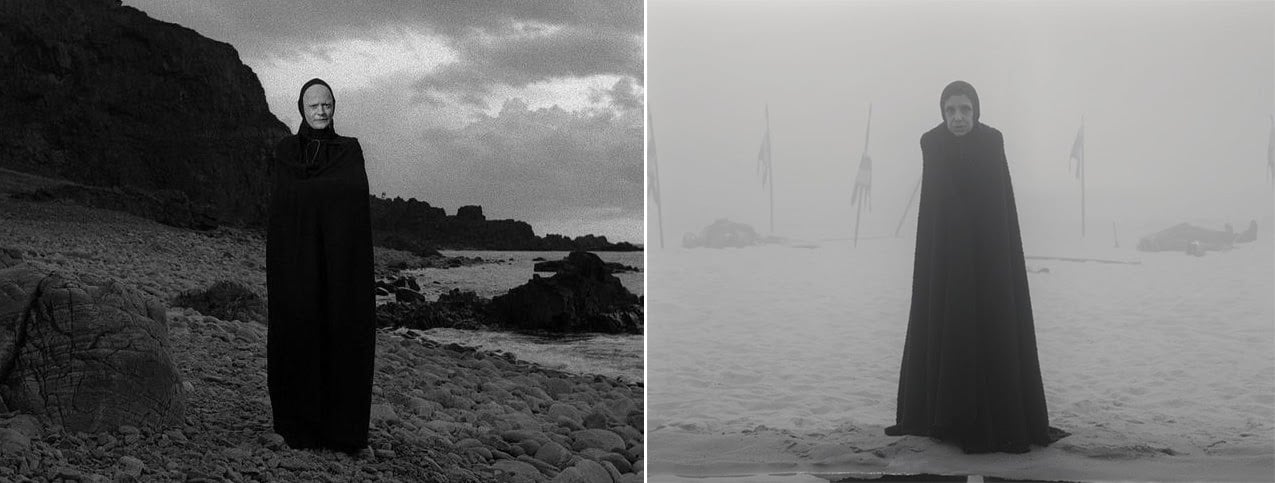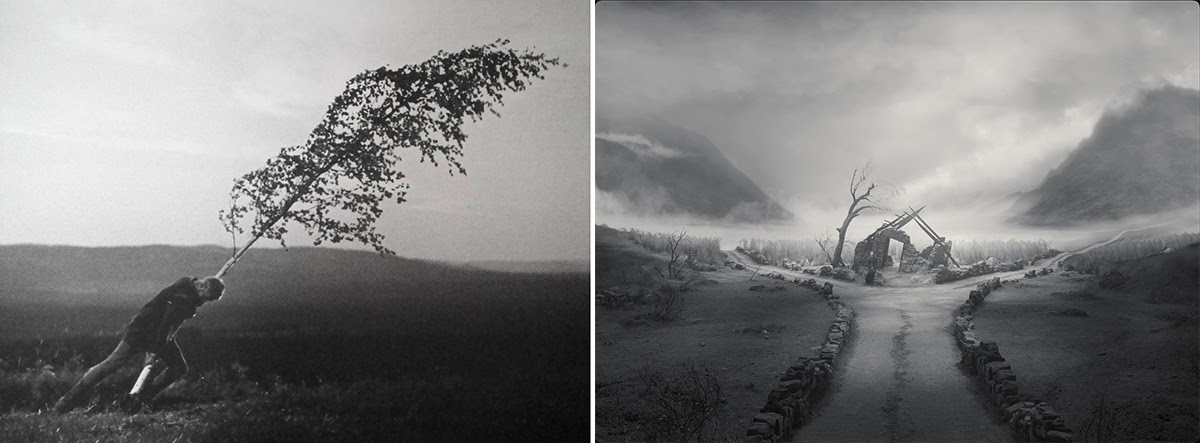There’s just something timelessly beautiful about Ingmar Bergman’s films.
I know, I know; there’s never been a more pretentious sentence written, but it’s true! From The Seventh Seal (1957), to Wild Strawberries (1957), to Persona (1966), and Fanny and Alexander (1982), Bergman’s filmography remains the high water mark for auteur filmmaking.
Sure, the black-and-white cinematography and nature of his films might alienate some modern audiences who feel that the films are too slow, dark, or challenging. But for anyone interested in any sort of career in film and video, I recommend you watch some Bergman films.
Not only will you likely gain some significant insights into, you know, the essentials of your human condition (including birth, growth, aspiration, conflict, and mortality), but it will also make you a better cinematographer and filmmaker.
Don't believe me? I’ll prove it to you.
We’ll start by highlighting the beautifully composed scenes from Joel Coen’s The Tragedy of Macbeth as well as other classical and modern examples. That will help us explore just what makes Bergman’s images so powerful and timeless, and also siphon some insights into how you can shoot your own films and projects this way.
Ingmar Bergman's influence on The Tragedy of Macbeth
It’s no secret that Joel Coen and cinematographer Bruno Delbonnel drew inspiration from the films of Ingmar Bergman (and his cinematographers Gunnar Fischer and Sven Nykvist) for The Tragedy of Macbeth.
These homages and visual motifs have been very much part of the greater filmmaking vernacular pretty much since Bergman’s films were first released. But Macbeth does something interesting in just how spot-on its visual homages appear on screen.
In the case of Coen’s take on Macbeth, these homages aren’t just minor suggestions that reference classic films; rather they’re a fully repurposed pastiche of many of Bergman’s most iconic images and scenes.
Let’s highlight a few below.

Bergman’s personification of death (on the left) from The Seventh Seal might be one of the most infamous characters in his entire filmography. While that image has been both copied and parodied over the years (we’ll look at a few notable examples below), Coen’s witch character from Macbeth is a spot-on homage to Bergman’s classic character.
However, Coen and Delbonnel’s use of this thematic lifting is done with a very specific purpose — it nicely ties together many of the similar themes which they’re trying to explore with their witch’s portrayal.
Looking specifically at the costume design, location scouting, black and white cinematography and lighting, and even the framing and composition, this might be one of the best uses of his iconic characters and images to elicit similar motifs and, frankly, scare the crap out of the audience with a single first frame.

The homages to Bergman in Macbeth aren’t just with specific characters and costumes though, but also with how Coen and Delbonnel choose to stage and light their characters and scenes.
Pulling from this classic era style, they are able to create some timeless images full of contrast and shadows — really pulling on how black-and-white cinematography both obscures and highlights characters and their faces.

It’s not just Bergman’s iconic film The Seventh Seal that Macbeth draws inspiration from either.
Take this famous image from Bergman’s film The Virgin Spring with its bleak landscapes and notable slanted tree scene. The world in which Coen’s Macbeth takes place feels like it’s lifted straight from these isolated Swedish landscapes, rife with angled trees and buildings that instantly put the viewer at unease.
Ingmar Bergman homages throughout the years
It’s not just Joel Coen and his film version of Macbeth that makes heavy use of Bergman’s cinematography to form its own look and style. In fact, Bergman’s iconic images have been copied, homaged, pastiched, and parodied over the years by a wide variety of artists and filmmakers.
When done correctly, Bergman’s cinematography can be used as a quick and easy way to immediately elicit many of the dark and powerful themes which Bergman’s films explore, whether it’s music videos or arthouse films or stoner comedies.
ABBA does Bergman
Take this music video by the Swedish pop group ABBA, which was directed by fellow Swede Lasse Hallström and filled with Bergman’s stylings and imagery.
Pulling mostly from the cinematography of Bergman’s psychological drama Persona (1966), Hallström’s clever re-appropriation of these different blocking and framing techniques mesh surprisingly well with the upbeat and fun nature of the song and video.
Bergman's influence on Mulholland Drive

However, in another example from David Lynch’s surrealist neo-noir Muholland Drive (2001), Lynch and cinematographer Peter Deming are more direct in their stylistic choices. They are clearly trying to elicit many of the same themes as Begman’s source material.
In his documentary Lynch on Lynch, the famous filmmaker talks about how much he “likes Bergman,” but mentions that his “films are so different,” almost as if he’s trying to recreate “spare dreams.”
And as anyone who’s seen Mulholland Drive can tell you, it feels like Lynch’s film closely mirrors this same effect.
Bill and Ted's iconic encounter with Bergman's Death

Speaking personally (and perhaps sadly for most of us), the most famous example of Bergman’s cinematography in contemporary cinema can be found in the unlikeliest of places.
Heavily featured in Bill & Ted’s Bogus Journey (1991) and again in the latest reboot sequel Bill & Ted Face the Music (2020), Bergman’s Death character might be best known to many as the antithesis foil to William S. "Bill" Preston and Ted "Theodore" Logan’s comedic adventures.
Which, from a filmmaking perspective, might simply be a fascinating lesson in how — despite its original composition and intentions — a filmmaker’s or film’s legacy can be almost completely homaged (or, perhaps more appropriately, parodied) in a way that unwittingly introduces an entire new audience to said work.
And while I would highly recommend any aspiring filmmakers who might be interested in a career in the industry to see The Seventh Seal first, I have to admit that watching the odd juxtaposition of these two portrayals of this character together is quite entertaining at the very least.
Further reading
Hopefully these examples of how Ingmar Bergman’s cinematography have been homaged and used over the years will give you some insights into how you can create your own films and projects with inspiration and pastiche.
If you’d like to read some more filmmaking resources and advice, be sure to check out these great articles from the Soundstripe blog:

